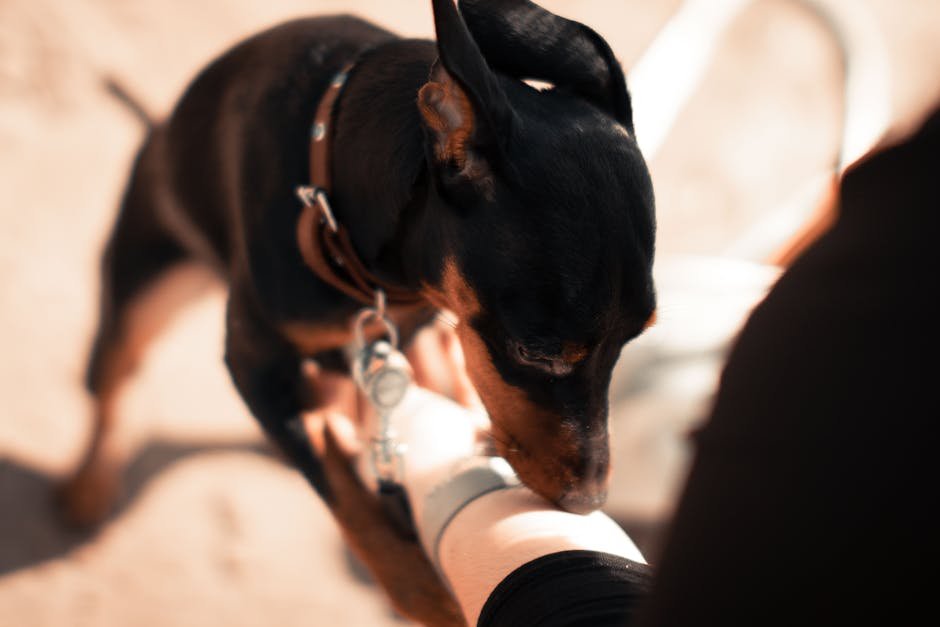Dogs are remarkable creatures, possessing an uncanny ability to understand and react to human emotions. Many dog owners can attest to moments when their furry friend seemed to know just how they were feeling, whether it was a time of joy or sorrow. This incredible connection between humans and dogs has been honed over thousands of years of companionship. In this article, we’ll explore the fascinating ways in which dogs can sense your mood, making them not just pets, but truly empathetic companions.
Body Language Reading

Dogs are experts at reading body language. They can pick up on subtle cues in your posture, movements, and even the way you hold your head. For instance, if you’re slouched over with your shoulders drooped, your dog might sense sadness or fatigue. Similarly, if you’re bouncing around with energy, they might interpret that as happiness. This ability to observe and interpret physical cues makes dogs incredibly attuned to human emotions. It’s like they have a built-in radar for our feelings, and they often respond accordingly.
Facial Expression Interpretation
Your dog is constantly observing your face, trying to decipher your mood from your expressions. They can distinguish between a frown and a smile, and they know which one means you’re happy and which one means you’re upset. Research has shown that dogs can recognize human facial expressions and adjust their behavior based on what they see. When you smile, they might wag their tail, and when you frown, they could offer a comforting nuzzle. This sensitivity to facial expressions is one of the many ways dogs connect with us on an emotional level.
Listening to Your Voice
Dogs have an acute sense of hearing, and they are particularly tuned into the tone and pitch of your voice. They can differentiate between a calm, soothing voice, and a tense, angry one. When you speak to your dog, they listen not just to the words, but to the emotions behind them. A gentle, loving tone may prompt them to come closer, while a harsh tone might cause them to back away. This ability to sense emotions through vocal cues is another way dogs can gauge your mood and respond accordingly.
Smelling Emotional Changes

Dogs have a sense of smell that is thousands of times more sensitive than humans. They can detect changes in your body odor that occur due to emotional shifts. For example, when you’re stressed, your body releases certain pheromones that your dog can pick up on. This olfactory sensitivity allows them to sense when you’re anxious or tense, even before you say a word. It’s as if they’re equipped with a superpower that helps them understand you on a deeper level.
Mirroring Your Emotions

Ever notice how your dog seems to mirror your emotions? If you’re feeling excited, they’re bouncing alongside you. If you’re feeling down, they’re quietly by your side. This behavior is known as emotional contagion, where your emotions can influence your dog’s mood. This mirroring is a sign of the strong bond between you and your dog. They empathize with you on a level that is both heartwarming and genuinely touching.
Responding to Changes in Routine

Dogs thrive on routine and are highly perceptive when it comes to changes in their environment. If your routine shifts due to stress or emotional changes, your dog will likely notice. For instance, skipping a daily walk or changing feeding times can signal to your dog that something is amiss. They might respond by becoming more attentive or clingy, trying to offer comfort through their presence. This sensitivity to routine highlights their attentiveness to your well-being.
Providing Comfort with Physical Contact

When you’re feeling down, your dog might instinctively offer physical comfort. They may lean against you, rest their head on your lap, or snuggle closer. This behavior is their way of saying, “I’m here for you.” Physical contact with your dog can be incredibly soothing, releasing oxytocin, the “feel-good” hormone, in both you and your pet. This mutual exchange of comfort and affection strengthens the bond between you and your furry friend.
Detecting Emotional Outbursts
Dogs are sensitive to sudden changes in emotion, such as an emotional outburst. Whether it’s a burst of laughter or a bout of tears, dogs can sense the shift in energy. They may respond by becoming more alert, trying to assess the situation. Sometimes, they might approach you cautiously, offering their presence as a calming influence. This ability to detect and respond to emotional outbursts showcases their instinctive understanding of human emotions.
Dogs are truly incredible creatures with an innate ability to sense and respond to human emotions. Their keen observations, acute senses, and empathetic nature make them exceptional companions. Whether they’re offering a comforting paw or simply sitting quietly by your side, dogs have a unique way of understanding and supporting us through life’s ups and downs. This deep connection is what makes the bond between humans and dogs so special and enduring.

Andrew Alpin from India is the Brand Manager of Doggo digest. Andrew is an experienced content specialist and social media manager with a passion for writing. His forte includes health and wellness, Travel, Animals, and Nature. A nature nomad, Andrew is obsessed with mountains and loves high-altitude trekking. He has been on several Himalayan treks in India including the Everest Base Camp in Nepal.





